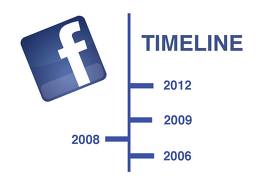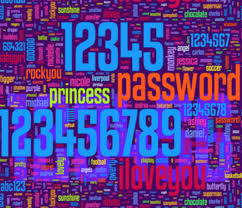Security Awareness Programs Like Mushy Overnight Oats?
To diagnose your under-performing cyber security awareness programs, all you need to do is look at my breakfast today. My daughter introduced me to overnight oats. “It’s the perfect breakfast, Dad – full of energy, takes no time at all, packed with simple, healthy ingredients like oatmeal, almond milk and peanut butter”, she said. “That’s what I need!”, I said, “All of the power with none of the fuss”. So I took her recipe and promptly ignored it. I added cottage cheese, chia and some lemon – because if it was already good, I was going to make it even better.
What I got was curdled mush that crawled out of the bowl like John Cusack’s dinner in Better off Dead. The theory of overnight oats was brilliant. It was my execution that made me gag.
Many security awareness programs choke on their own ingredients because, like my overnight oats, they don’t follow a recipe when they plan the program. The have no overarching security “end” in mind at the beginning, to paraphrase Stephen Covey. Empowering the human element of cyber security is the cultural ingredient that many organizations overlook. Think about tweaking your recipe a bit to make it more than palatable.
A Recipe for Effective Security Awareness Programs
One byproduct of serving as the opening keynote speaker for hundreds of security awareness programs around the world (in addition to the bottomless pit of mileage points I’ve earned), is that I have dined amidst training programs, OVER and OVER again, that leave me hungering for more substance and lots more flavor. Here is my simple recipe for a filling, enjoyable and effective Security Awareness Program:
Ingredients (For a Culture of Security that Cooks):
- (1-3) C-Level Executive(s) who “Believe” (Ownership)
- (1) Cross-Functional Business Case w/ Compelling ROI (Strategy)
- High-Engagement Content Rooted in Personal Security (Methodology)
- (6-12) Regular, Engaging Follow-on “Snacks” (Sustenance)
- (1) Feedback Dashboard to Measure “Diner” Response (Metrics)
Ownership. Failing to have a highly-communicative Chief Executive leading your initiative is like expecting a 3-Star Michelin rating from a fast-food cook. You must have high-level “buy-in” for your program to work. I’m not talking about the CISO, CRO, CIO or CTO here – that would just be preaching to the choir. The missing cook in awareness programs tends to be a security “believer” from the executive team. Successful security awareness programs are clearly led, repeatedly broadcast and constantly emphasized from the top of the organization, all with an attitude of authenticity and immediacy. Whether served up by your CEO at an annual gathering or by your Board of Directors to kick off National Cyber Security Awareness Month, your security champion must become an evangelist for defending your data.
Strategy. Don’t expect to randomly add security ingredients to the bowl and blindly hope they mix well together. You’ll just end up with curdled oatmeal. Approach your program strategically, and devise a recipe to protect your intellectual property, critical data and return on information assets. You are competing for resources, so build a compelling business case that demonstrates the organization’s ROI in business terms, not buried in techno-babble. What did it cost your competitor when ransomware froze their operation for a week? How much would the training have cost to avoid the CEO whaling scheme that lost a similar-sized company $47 million? What do the owners of compliance, HR and I.T. have to add to the meal? The most successful security awareness programs have a budget, a staff (however small) and cross-departmental support. Involve the business team and other stakeholders up front to leverage their expertise before rollout.
Methodology. Here is a litmus test for the potential effectiveness of your security awareness program: Does it begin by focusing on the critical information assets and devices inside of your organization? If so, it’s probably doomed. Why? Because your employees are human beings and they want to know how this affects them personally before they willingly invest time to protect the corporate coffers. Excellent security awareness kicks off by making data protection personal – by building ownership before education. From there, the training must be engaging (dare I say fun!?) and interactive (live social-engineering) so that your audience members pay attention and apply what they learn. Death-By-PowerPoint slides will permanently put behavioral change to sleep. Highly-effective programs build a foundational security reflex (proactive skepticism), and are interesting enough to compete against cute puppy videos, smartphone farm games and our undying desire for a conference-room cat nap.
Sustenance. Best practice security awareness training, like a five-course meal, doesn’t end with the appetizer. Yes, kickoff is best achieved with a high-energy, personally relevant, in-person presentation that communicates the emotional and financial consequences of data loss. But that is only the beginning of the meal. From there, your team needs consistent, entertaining follow-up education to keep the fire alive. For example, we have found short, funny, casual video tips on the latest cyber threats to be highly effective. And lunch workshops on protecting personal devices. And incentive programs for safe behavior. And so on. Culture matures by feeding it consistently.
Measurement.If you don’t measure your progress (and actually demonstrate some), no one will fund next year’s dining budget. What are your Security Awareness Training KPIs, your key metrics? How did successful phishing attacks decline as a byproduct of your program? Has user awareness of threats, policy and solutions increased? How many employees showed up for the Cyber Security Awareness Month keynote and fair? How department-specific are your training modules – or does one size fit all? When you can show quantitative progress, you will have the backing to continue building your qualitative culture of security.
And now, back to the meal. In spite of the lemon juice that further curdled the cottage cheese and ruined my oats, I was still hungry, so I ended up choking them down, vowing to listen to my daughter next time. And I hope you will listen to me this time: Approach your security awareness program like you are planning a feast for guests who matter a great deal to you. Because your uneducated employees, unprotected customer data, and invaluable intellectual capital are exactly what cybercriminals are eating for breakfast.
What are the greatest gaps you see in Security Awareness Programs? Please share your brilliance below.
John Sileo loves his role as a keynote “energizer” for Cyber Security Awareness Programs. He specializes in making security fun, so that it sticks. His clients include the Pentagon, Schwab and some organizations so small (and security conscious) that you won’t have even heard of them. John has been featured on 60 Minutes, recently cooked meatballs with Rachel Ray and got started in cyber security when he lost everything, including his $2 million software business, to cybercrime.



 2. Facebook third-party app providers can harvest personal details about you—even those you specifically told Facebook you wished to be private. Third-party apps are software applications available through Facebook but actually created by other companies. These include games and quizzes popular on Facebook like FarmVille and Words with Friends, plus applications like Skype, TripAdvisor and Yelp. Most Facebook apps are free—the companies that produce them make their money by harvesting personal details about users from their Facebook pages, then selling that information to advertisers. In other words, you are paying for the right to use Facebook using the currency of your personal information.
2. Facebook third-party app providers can harvest personal details about you—even those you specifically told Facebook you wished to be private. Third-party apps are software applications available through Facebook but actually created by other companies. These include games and quizzes popular on Facebook like FarmVille and Words with Friends, plus applications like Skype, TripAdvisor and Yelp. Most Facebook apps are free—the companies that produce them make their money by harvesting personal details about users from their Facebook pages, then selling that information to advertisers. In other words, you are paying for the right to use Facebook using the currency of your personal information. 4. “Social readers” tell your Facebook friends too much about your reading habits. Some sites, including the Washington Post and England’s The Guardian, offer “Social Reader” Facebook tools. If you sign up for one, it will tell your Facebook friends what articles you read on the site, sparking interesting discussions.
4. “Social readers” tell your Facebook friends too much about your reading habits. Some sites, including the Washington Post and England’s The Guardian, offer “Social Reader” Facebook tools. If you sign up for one, it will tell your Facebook friends what articles you read on the site, sparking interesting discussions. 6. Our Facebook friends—and those friends’ friends—offer clues to our own interests and activities. Even if you’re careful not to provide sensitive information about yourself on Facebook, those details could be exposed by the company you keep.
6. Our Facebook friends—and those friends’ friends—offer clues to our own interests and activities. Even if you’re careful not to provide sensitive information about yourself on Facebook, those details could be exposed by the company you keep. We hear all the time about stupid things people do when it comes to creating passwords; the most commonly used passwords in the United States for the past several years include “123456”, “password” and some variation like “password1234”. People are easily tricked into giving away their passwords to the likes of Jimmy Kimmel or Ellen to our amusement. Before Sony was breached, they infamously kept their passwords in a file called “Passwords”!
We hear all the time about stupid things people do when it comes to creating passwords; the most commonly used passwords in the United States for the past several years include “123456”, “password” and some variation like “password1234”. People are easily tricked into giving away their passwords to the likes of Jimmy Kimmel or Ellen to our amusement. Before Sony was breached, they infamously kept their passwords in a file called “Passwords”! We’ve all been there before–killing time at the airport, meeting up with a colleague at a local coffee shop, staying at a hotel…–and we want to connect to the Internet. Nearly everyone offers free Wi-Fi these days, including lots of cyber criminals. They’ve become so good at mimicking legitimate hotspots that you’d better know what you’re looking for before you connect! Here are our top six tips to stop those Wi-Fi Hotspot Hackers.
We’ve all been there before–killing time at the airport, meeting up with a colleague at a local coffee shop, staying at a hotel…–and we want to connect to the Internet. Nearly everyone offers free Wi-Fi these days, including lots of cyber criminals. They’ve become so good at mimicking legitimate hotspots that you’d better know what you’re looking for before you connect! Here are our top six tips to stop those Wi-Fi Hotspot Hackers.